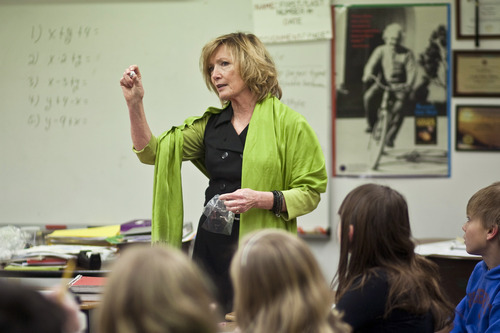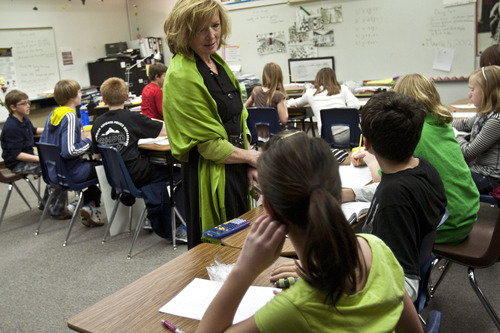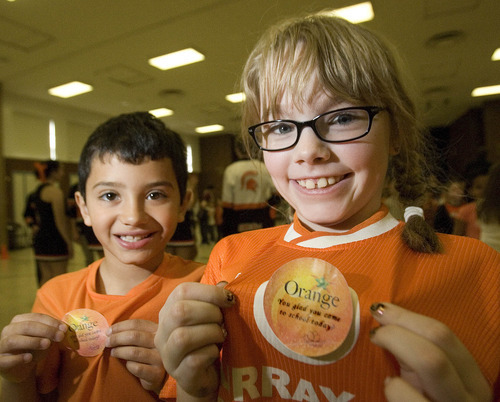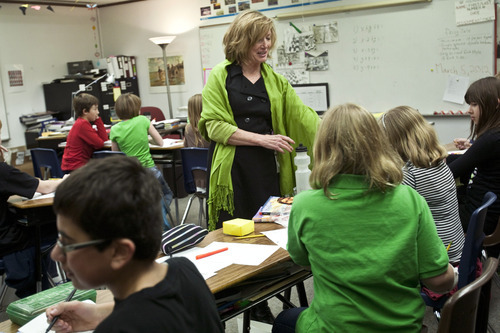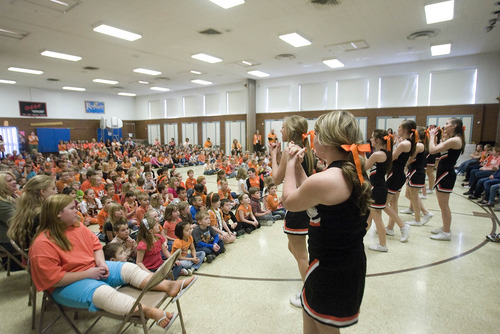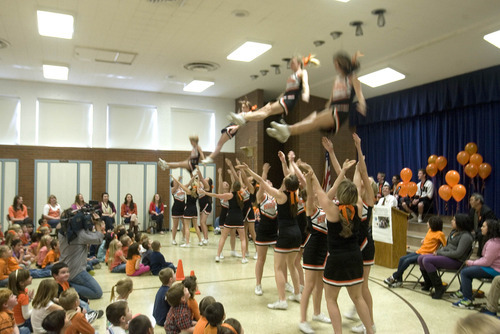This is an archived article that was published on sltrib.com in 2012, and information in the article may be outdated. It is provided only for personal research purposes and may not be reprinted.
The noise was dangerously loud inside the Murray High cafeteria.
It wasn't the lunchroom chatter that was causing the trouble, but rather the music from students' ear buds. That noise — streaming from MP3 players and iPods — was loud enough to do long-term damage to students' ears.
"In society, we're seeing more and more people who have noise-induced hearing loss," said Laurel Brown, a speech-language pathologist for the Murray City School District.
So Murray officials are raising awareness with a campaign called Love Your Ears that is meant to help students keep their hearing.
As part of Love Your Ears, Brown, an intern and Murray High student body officers tested students' ear buds during two lunch periods at Murray High to see if the music was playing at safe volumes. Listening to loud music for a prolonged period — especially with devices that are positioned close to the ears — can lead to long-term damage, Brown said.
"We found that 73 percent of all students tested had their iPods and MP3s to the high danger and immediate danger range," Brown said.
The findings were consistent with those logged during a similar activity two years ago at the school.
The tests were conducted with the help of a device known as the Ear3, produced by the Hollins Communications Research Institute. Students were told to turn the volume to what they usually listen to, then to plug one ear bud onto the sound port of the Ear3.
With a color-coded display, the Ear3 ranked the volume as an immediate danger, a high danger, a danger or a safe level. Few students, according to Brown, tested at the safe level.
"I'm amazed," said Lindsay Jones, Brown's intern. "Pretty much everybody who came up were in the danger levels. A lot of them didn't realize they were exposed to that."
Granted, students were in a noisy cafeteria. Some students probably turned up their ear buds louder than usual to hear. But Jones said the music volume doesn't have to be extremely loud to reach danger levels.
"We want to increase awareness," Jones said. "Hearing loss is permanent."
Jones, who is a graduate student in speech-language pathology at the University of Utah, said she wishes kids would be more interested in protecting their ears. One of the things she and Brown recommend is to shorten the exposure to loud music.
"Your ears have time to recover if you listen only 30 minutes at a time," Jones said.
Other suggestions include keeping the volume at half capacity or resting your ears in between listening for at least two hours.
"Typically, kids like to listen to music at loud volumes because it feels good to them; they enjoy it," Brown said. "With hearing buds, it's a loud noise that's close to the ear drums."
That means sounds that are closer to the ears are even louder than the sounds that come, say, from a radio in the car, Brown explained.
Brown said that once the sensory receptors of the inner ear are damaged, it's hard to recover. And young students often don't sense hearing loss because it declines gradually.
"It's not like having a blinding, bright light shone in your eyes and forcing you to look away," she said. "They don't think they're losing their hearing because they don't get the immediate sense that they're losing their hearing."
Tosha Kelsey, a senior at Murray High, was among the minority of students whose ear buds tested at a safe level.
"I really don't listen that much with earphones, mostly with speakers," she said.
Emily Martin, a junior student body officer who helped out with the event, said she was surprised to see so many people testing at the dangerous levels.
"A lot of people don't realize how it can affect them," she said.
Although the ear bud testing was done only at Murray High, the Love Your Ears campaign also is raising awareness at Riverview Junior High, where posters encourage safe listening.
The Murray City School District has a policy of ear screening for new students and for those who request it. About 200 students get their ears screened a year.


